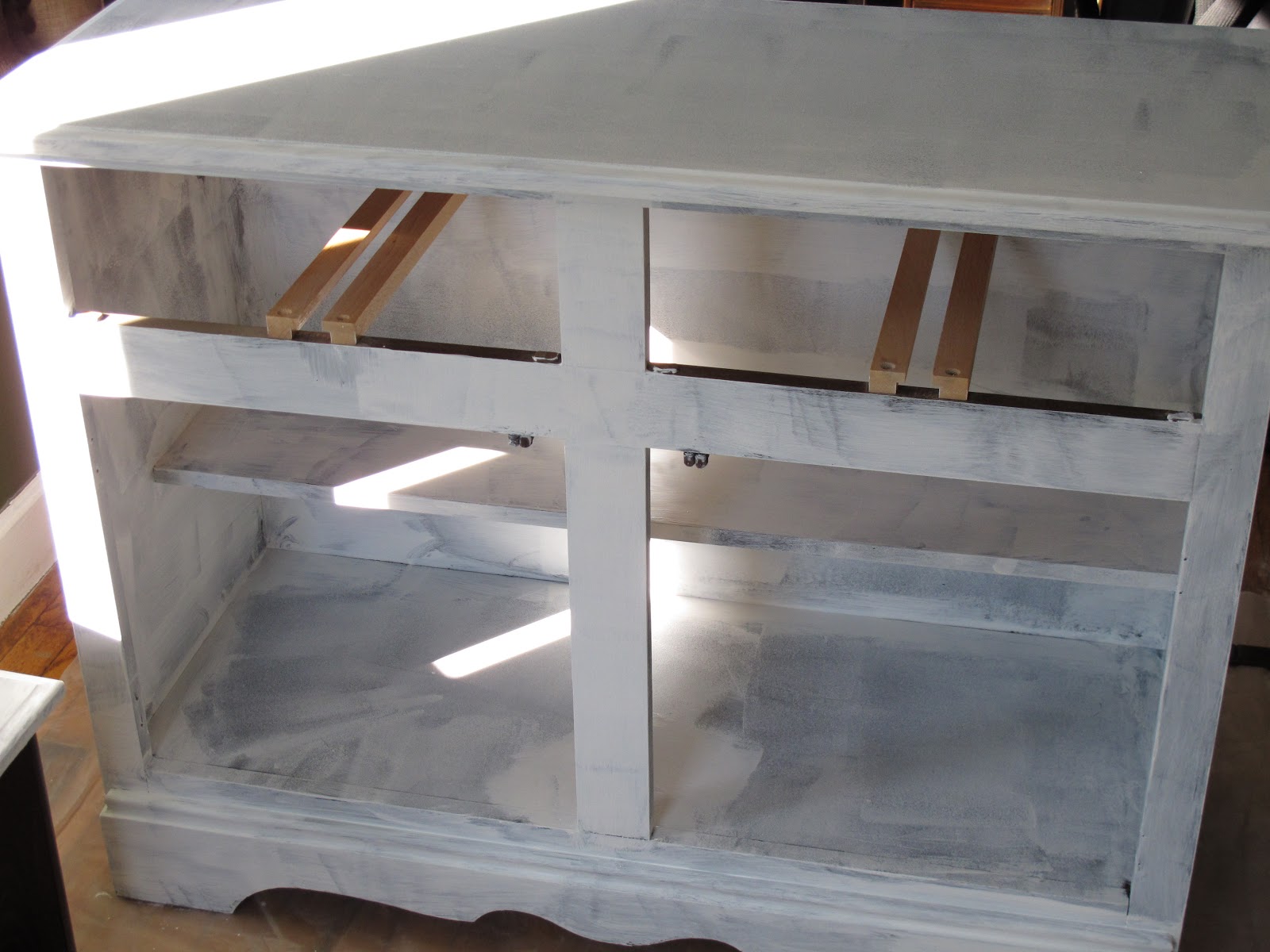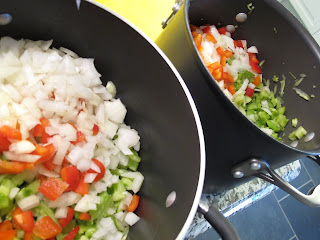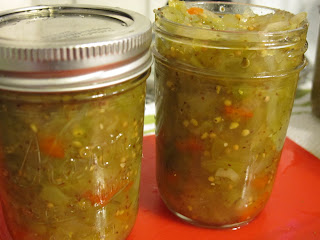
Kitchen renovations are no joke, people. They are expensive (about 2 times what we originally anticipated), long (about 2 weeks longer than we planned) and stressful (washing your dishes in the bathroom sink & having your refrigerator in your dining room, stressful). But, oh the blissful relief when you come out on the other side of it all with a kitchen you LOVE to be in, cook in, chat in and eat in. We knew we wanted to make big changes: knocking out a wall, constructing a new breakfast bar, new floors, new cabinets, new countertops, new corner stairs. In was almost a complete "gut", except for the fact that we left the sink, dishwasher and oven in the same place as before (so we didn't have to mess with too much plumbing and gas). Also, after crunching some numbers, we decided to wait on replacing the refrigerator and oven. It was just too expensive for now and since we were going with a white and grey color scheme, the white appliances didn't seem too intrusive. Hopefully we can just slide new (stainless) ones into place when we're ready to purchase them.
Here's a before. Note: makeshift "cabinets" on the right wall (separating the kitchen from the dining room), the black and white checkerboard floor, the tan "textured" walls.
The biggest change we made was knocking out that wall and putting up new cabinets that created a pass through and breakfast bar, shared with the dining room. We went with IKEA cabinets; partially because of cost, and partially because they came standard with all the bells and whistles (soft-close, storage solutions, etc.) We had them shipped (in all their efficient flat-pack glory), which of course meant we had to put them all together. Aside from one incident with the base corner cabinet (which I put together and took back apart three times, at about 1am the night before the countertops were supposed to be measured), the assembly wasn't that big of a deal. We've been very happy with the quality and I'm so glad we went with white; it feels so bright and clean.

Here's a shot from the dining room. We LOVE this breakfast bar. It's fantastic to not be closed off in the kitchen by myself while I cook. Now Jake can sit at the bar and we can chat while I chop. We went with a modern, grey granite. We got it at a great price and it included a new 60/40 under mount sink. Bonus! Our only hesitation was how bold the contrast in the granite was. It felt more modern than other choices, but it also felt a little busy. To balance it out, we went with a more classic Carerra marble subway tile backsplash and dark grey slate floors.


Here's the corner between the two windows, before reno.

And here it is after reno. We wanted to do cabinets all the way to the ceiling, to maximize storage and give us a chance to do some glass front displays. And I talked Jake into doing the chunky floating shelves for some open storage, left of the stove. I love the way it turned out. Now we put items we use often here: sugar, oatmeal, tea, glasses. We designed it so it mirrors the chamfered edge of the lower open shelving to the right of the oven.

Here's the corner with the stair pass through and the sink. Before, it was a mess. Notice the uneven rises on the (sinking, plywood) stairs. What a joke.
Now it feels much cleaner, sturdier and less like an after-thought. Plus, we found a little unused space for storage...

Yep. Hidden storage drawers. Making the most of our space was really important to us. We wanted to make use of every available square foot.

In the name of creative storage solutions, my brilliant designer husband came up with this "stud-cubbie" idea. Basically, we created built-in shelves between the studs in this otherwise unusable wall. It might be my favorite feature of the whole room. We now use it to hold oil and vinegar, spices, and mason jars of rice and nuts. Oh, and the occasional cute knick knack. (Adorable ornamental tea-cup, anyone?)

(Also, the mirror on the door to the basement serves double duty as a dry erase board to keep a running grocery list on.)
Another favorite station in the kitchen is the sink. My mom made those glass sun catchers in the window (which I absolutely love), and I like keeping herbs and succulents on the window sill. Plus, the new sink is WAY better to wash dishes in.























































